
Find Help
More Items From Ergsy search
-

Do pets contribute to hay fever?
Relevance: 100%
-

What is hay fever?
Relevance: 82%
-

Can hay fever occur year-round?
Relevance: 76%
-

Is there a link between hay fever and asthma?
Relevance: 73%
-

Can hay fever be prevented?
Relevance: 72%
-

Do masks help with hay fever?
Relevance: 69%
-

Hay fever advice | NHS
Relevance: 68%
-

Can children develop hay fever?
Relevance: 68%
-

Are some people more prone to hay fever?
Relevance: 67%
-

What are the common symptoms of hay fever?
Relevance: 67%
-

Why are experts warning of rising hay fever cases?
Relevance: 66%
-

Is hay fever more common in urban areas?
Relevance: 64%
-

Can diet influence hay fever symptoms?
Relevance: 63%
-
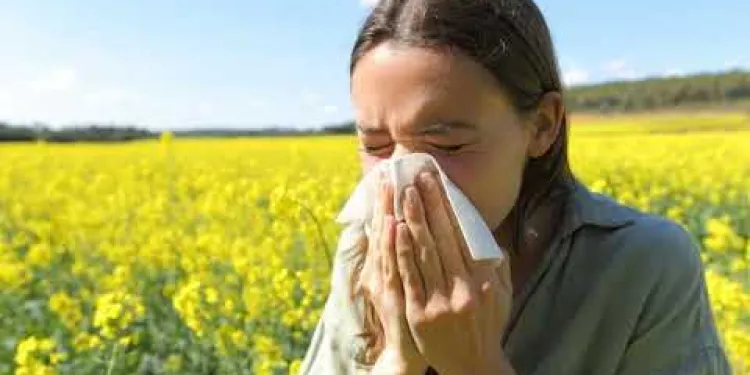
Antihistamines how they work with hay fever
Relevance: 63%
-

Can hay fever symptoms mimic other conditions?
Relevance: 62%
-

Experts Warn of Rising Hay Fever Cases as Pollen Counts Surge
Relevance: 62%
-

Do all plants produce pollen that causes hay fever?
Relevance: 62%
-

How does pollen affect people with hay fever?
Relevance: 62%
-

Self care - hay fever itchy eyes
Relevance: 61%
-

Can mosquito screens help reduce hay fever symptoms?
Relevance: 59%
-

Are there any treatments for hay fever?
Relevance: 49%
-

How long does a typical hay fever season last?
Relevance: 42%
-

Can pets get Lyme disease?
Relevance: 38%
-
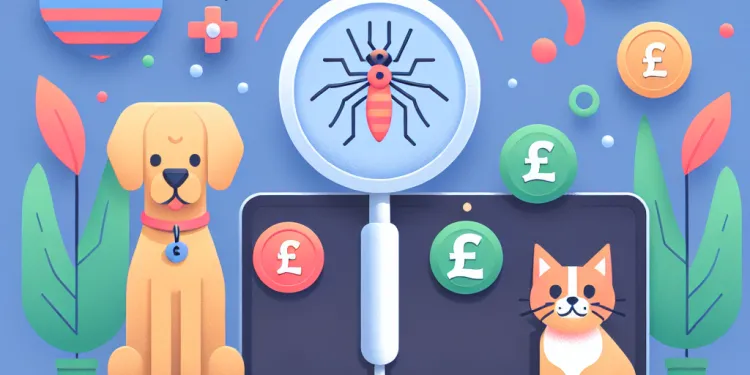
Can pets get West Nile Virus?
Relevance: 37%
-

Are there first aid courses for pets?
Relevance: 36%
-

Do UK spiders pose a threat to pets?
Relevance: 36%
-

Can I keep a spider in the UK as a pet?
Relevance: 35%
-

Can pets damage mosquito screens?
Relevance: 34%
-
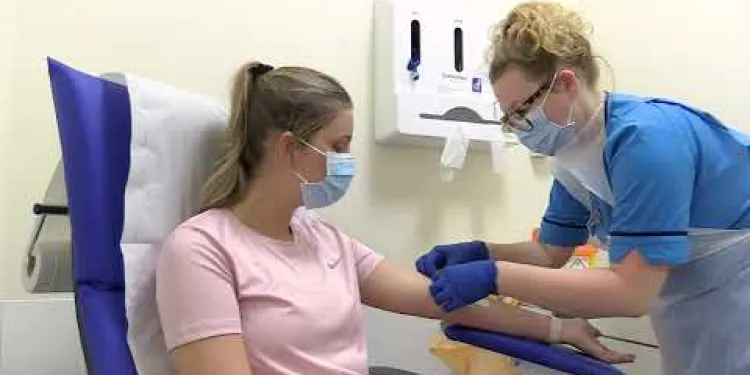
The FDG PET Scan: What to expect
Relevance: 34%
-

Can I bring my pet to France or Spain from the UK?
Relevance: 33%
-
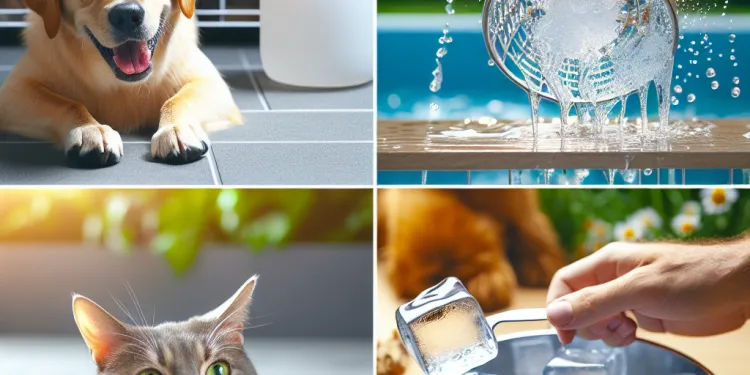
Are there any special precautions for pets during a heatwave?
Relevance: 33%
-

What changes affect pet policies in rented homes?
Relevance: 33%
-

Your PET/CT scan at University College Hospital
Relevance: 32%
-

How can I ensure pets are safe during a heatwave?
Relevance: 32%
-

Caring for a child with fever | NHS
Relevance: 29%
-
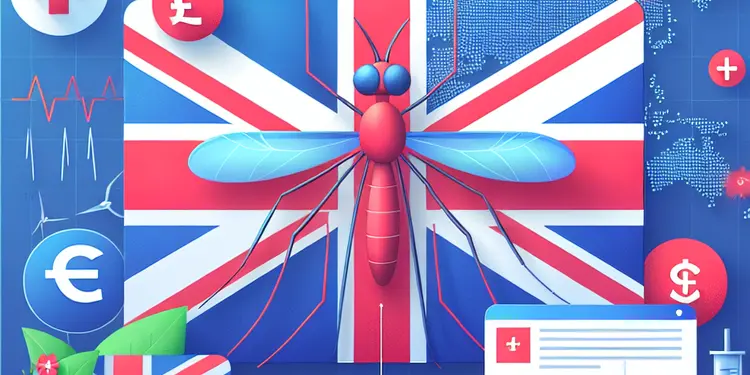
Can dengue fever be contracted in the UK?
Relevance: 28%
-

Is there a risk of yellow fever being spread by mosquitoes in the UK?
Relevance: 28%
-

How to treat glandular fever | NHS
Relevance: 28%
-

What are potentially exempt transfers (PETs)?
Relevance: 27%
-

Which medication should be avoided for children with fevers?
Relevance: 26%
Understanding Hay Fever
Hay fever, also known as allergic rhinitis, is a common allergic reaction that manifests in symptoms such as sneezing, a runny or blocked nose, itchy eyes, and general discomfort. This condition is typically triggered by airborne allergens like pollen, dust mites, and pet dander. With an estimated 10 to 30% of people in the UK affected, understanding the various contributors to hay fever is crucial, especially for pet owners.
Role of Pets in Allergies
Pets, particularly furry animals like cats and dogs, can play a significant role in aggravating allergic reactions, including hay fever. Pet dander, which consists of tiny, even microscopic, flecks of skin shed by cats, dogs, rodents, birds, and other animals with fur or feathers, can trigger allergic reactions. This dander can become airborne and enter the eyes or respiratory passages of individuals sensitive to allergens, leading to hay fever symptoms.
Impact of Pet Pollen Carriers
In addition to dander, pets can indirectly contribute to hay fever by acting as pollen carriers. When pets wander outside, especially in the spring and summer months, pollen can latch onto their fur and be brought into the home. This, in turn, increases the likelihood of hay fever symptoms, as pollen is one of the most common triggers for hay fever.
Reducing Allergy Risks for Pet Owners
While pets can contribute to hay fever, there are several steps pet owners can take to minimise allergic reactions. Regular grooming and bathing of pets can help reduce the amount of dander and pollen they carry. Vacuuming with a high-efficiency particulate air (HEPA) filter and using air purifiers can significantly reduce allergens in the home environment. Additionally, keeping pets out of bedrooms or off furniture can limit exposure to dander and pollen.
Consulting Healthcare Professionals
If you suspect that your pet contributes to your hay fever symptoms, it is wise to consult with healthcare professionals, such as GPs or allergy specialists. They can offer specific advice tailored to your situation, which may include allergy testing or recommendations on mitigating symptoms through medication such as antihistamines or nasal sprays.
Conclusion
While pets can contribute to hay fever through dander and pollen, this does not mean that individuals with allergies must forgo owning pets. With careful management and attention to cleanliness and home care, pet owners can mitigate the effects of allergens and reduce their hay fever symptoms. Understanding the potential sources of allergens and taking proactive measures can help maintain both a happy pet-friendly home and a healthier lifestyle.
Understanding Hay Fever
Hay fever is when you have an allergic reaction. It can make you sneeze, have a runny nose, or itchy eyes. It happens because of things like pollen from plants, dust mites, or tiny bits of skin from animals. A lot of people in the UK have hay fever. It is important to know what causes it, especially if you have pets.
Role of Pets in Allergies
Pets like cats and dogs can make allergies worse. They shed small pieces of skin called dander that can cause allergies. This dander can float in the air and make people with allergies feel sick. It can give them hay fever symptoms like sneezing and itchy eyes.
Impact of Pet Pollen Carriers
Pets can also bring pollen into your home. Pollen sticks to their fur when they go outside. When they come back inside, the pollen gets into your house. This can make hay fever worse, especially in spring and summer.
Reducing Allergy Risks for Pet Owners
If you have pets and hay fever, there are ways to help. You can brush and bathe your pets often. Use a vacuum that traps tiny dust and dander. Keep pets out of your bedroom to feel better. Air purifiers can also help reduce allergens in your home.
Consulting Healthcare Professionals
If your pet makes your hay fever bad, talk to a doctor. They can help you find ways to feel better. They might suggest medicine like antihistamines or sprays to stop symptoms.
Conclusion
Having pets doesn’t mean you have to suffer from hay fever. By keeping things clean and using simple tools, you can enjoy life with your pets. Knowing what bothers your allergies and being careful helps keep you and your pets happy and healthy.
Frequently Asked Questions
What is hay fever?
Hay fever, also known as allergic rhinitis, is an allergic response to airborne substances like pollen, dust mites, or pet dander that can cause sneezing, itching, nasal congestion, and other symptoms.
Can pets contribute to hay fever?
Yes, pets can contribute to hay fever-like symptoms through the dander they shed, which can be an allergen for some people.
What is pet dander?
Pet dander consists of tiny, even microscopic, flecks of skin shed by cats, dogs, rodents, birds and other animals with fur or feathers. These bits of skin can cause reactions in people who are specifically allergic to these triggers.
Which pets most commonly cause allergies?
Cats and dogs are the most common pets associated with allergies, but other animals like birds, rabbits, and rodents can also cause reactions.
What symptoms might indicate a pet allergy?
Symptoms of a pet allergy can include sneezing, runny or stuffy nose, itchy or watery eyes, coughing, wheezing, and itching around the eyes or skin.
How can I minimize pet-related hay fever symptoms?
To minimize symptoms, keep pets out of bedrooms, use HEPA air filters, vacuum regularly with a HEPA vacuum, and bathe pets regularly.
Can pet dander cause hay fever all year round?
Yes, unlike pollen which is seasonal, pet dander can be a year-round trigger for those who are allergic.
Is it possible to be allergic to one type of pet but not another?
Yes, it's possible. Allergies are specific to proteins found in the pet's skin cells, urine, and saliva, which can vary between species and even between individual animals.
If I'm allergic to pets, should I avoid having them at all?
Not necessarily. With proper management and care, some people with mild allergies can live comfortably with pets. However, this can vary based on allergy severity.
What role does pet saliva play in allergies?
Pet saliva contains allergens that can cause reactions in sensitive individuals. When pets groom themselves, these allergens can spread to their fur and then into the environment.
Can allergy shots help with pet allergies?
Yes, allergy shots, or immunotherapy, can be an effective treatment for pet allergies by gradually desensitizing the immune system to the pet allergens.
Are 'hypoallergenic' pets really allergy-free?
No animal is completely hypoallergenic. 'Hypoallergenic' pets may produce fewer allergens, but they can still exacerbate symptoms in sensitive individuals.
Do all pets produce the same level of allergens?
No, allergen levels can vary widely between individual animals and types of animals. Factors like breed, sex, and individual differences can play a role.
Can pet allergies trigger asthma?
Yes, exposure to pet allergens can worsen asthma symptoms and potentially trigger asthma attacks in susceptible individuals.
What is a HEPA filter, and how does it help?
HEPA stands for High-Efficiency Particulate Air. HEPA filters trap a large amount of very small particles that other vacuum cleaners would recirculate into the air of your home.
Should I consider rehoming my pet if I have severe allergies?
In severe cases where allergies cannot be managed effectively with medication and lifestyle changes, rehoming might be the most suitable option. This is a personal decision that should be made considering health and family circumstances.
Does pet fur itself cause allergies?
No, pet fur itself is not an allergen, but it can carry allergens like dander, saliva, and urine protein.
Are there any medical treatments for pet-induced hay fever?
Yes, antihistamines, nasal corticosteroids, and decongestants can help manage symptoms. For long-term management, you might consider allergy immunotherapy.
Can regularly cleaning the home reduce pet allergies?
Yes, cleaning can help. Regular vacuuming with a HEPA filter, dusting with damp cloths, and washing pet bedding can reduce allergen levels.
How can I test if I'm allergic to pets?
Allergy testing, such as skin tests or blood tests, can determine specific allergies, including those related to pets, and should be conducted by an allergy specialist.
What is hay fever?
Hay fever is when your nose and eyes feel bad because of dust or flowers. It can make you sneeze and your eyes can get itchy.
To feel better, you can use tissues for your nose or wear sunglasses to protect your eyes.
Hay fever happens when your body reacts to things in the air like pollen, dust mites, or pet hair. It can make you sneeze, itch, and have a stuffy nose. Here are some ideas to help:
- Try using tissues to keep your nose clear.
- Wash your hands and face often to keep pollen away.
- Consider wearing a hat and sunglasses outside to protect from pollen.
- There are also medicines that can help. Ask an adult to help you find the right one.
Do pets cause hay fever?
Yes, pets can sometimes make people feel like they have hay fever. This is because of tiny bits of skin called dander that come off pets. Some people are allergic to this dander.
What is Pet Dander?
Pet dander is tiny flakes of skin from animals like cats and dogs. They can make some people sneeze or feel itchy. If you have a pet, you might find pet dander on your clothes or furniture. Using a vacuum cleaner and regularly washing your hands can help reduce pet dander.
Pet dander is made of very small bits of skin. These bits come off animals like cats, dogs, mice, birds, and other animals with fur or feathers. Some people are allergic to these tiny pieces of skin, and they can have a reaction when they are around them.
To make it easier, you can use tools like air purifiers to help clean the air. You can also keep pets out of certain rooms where you want the air to be cleaner.
What pets can make people sneeze?
Cats and dogs are pets that can cause allergies. But other animals like birds, rabbits, and rodents can also make people feel sick.
What signs show a pet allergy?
Here are some signs that someone might have a pet allergy:
- Sneezing or a runny nose
- Itchy or red eyes
- Coughing or wheezing
- Rashes or itchy skin
If you think you have a pet allergy, here are some things you can do:
- Try to stay away from pets.
- Wash your hands after you touch a pet.
- Talk to a doctor if symptoms do not get better.
Tools like picture charts or storyboards can help you understand these signs better.
When you have a pet allergy, you might have symptoms like:
- Sneezing
- A runny or blocked nose
- Itchy or watery eyes
- Coughing
- Making a whistling sound when you breathe (wheezing)
- Feeling itchy around your eyes or on your skin
Here are some things that might help:
- Try using tissues to wipe your nose and eyes.
- Wash your hands and face often.
- Ask a grown-up to help you use a nasal spray or allergy medicines.
How can I make my hay fever better when I have a pet?
If your pet makes you sneeze or your eyes itchy, here are some easy tips to feel better:
- Keep your pet clean: Give your pet a bath often to wash away dust and fur.
- No pets in the bedroom: Keep your bedroom a pet-free zone so you can sleep better.
- Wash your hands: Always wash your hands after playing with your pet.
- Use air filters: Get an air purifier to help clean the air in your home.
- Vacuum often: Clean the floors and carpets often to pick up pet hair.
- Talk to a doctor: They can give you advice or medicine to help.
These tips can help make your hay fever better when you have a pet.
To feel better, try these tips:
- Keep pets out of your bedroom.
- Use a special air filter called a HEPA filter.
- Vacuum often with a HEPA vacuum cleaner.
- Give your pets a bath regularly.
You can also use pictures and diagrams to help you understand these steps. Setting reminders on your phone can help you remember to vacuum or bathe your pet.
Can pets make you sneeze all year?
Some animals have small bits, called dander, in their skin and fur.
Dander can make some people sneeze, have itchy eyes, or a runny nose.
This can happen any time of the year.
Tools that can help:
- Use tissues for runny noses.
- Wash hands after touching pets.
- Keep pets out of the bedroom.
Yes, pet dander can make allergies happen all year, not just in one season like pollen.
If you have allergies, you can use special air filters or vacuum cleaners to help. You can also wash your hands after touching pets.
Can someone be allergic to one pet but not to another?
Yes, it's possible. Allergies can happen because of tiny bits in the pet's skin, pee, or spit. These bits can be different for different animals and even different for each pet.
If I'm allergic to pets, should I avoid having them?
If you sneeze or get itchy around pets, you might be allergic to them.
Here are some things you can do:
- Talk to a doctor. They can help you understand your allergies.
- If you really want a pet, ask your doctor if it's safe for you.
- Try spending time with pets at a friend's house first to see how you feel.
Remember, it's important to feel well and safe.
Not always. If you take care of yourself, some people with small allergies can have pets. But it depends on how strong your allergies are.
How does pet spit cause allergies?
When animals like cats and dogs lick, they leave spit (saliva) behind. Some people are allergic to this spit.
If you have allergies, the spit can make you sneeze, have itchy eyes, or make it hard to breathe.
To help, you can:
- Wash your hands after touching pets.
- Keep pets out of your bedroom.
- Use air purifiers to clean the air.
Pet spit has stuff inside that can make some people feel bad. When pets clean themselves, this stuff can get on their fur and spread around where you live.
Do allergy shots help if you are allergic to pets?
Yes, allergy shots can help with pet allergies. They work by slowly helping your body get used to pet allergens so they don't bother you as much.
Are 'hypoallergenic' pets good for people with allergies?
Some pets are called 'hypoallergenic'. This means they might be better for people who sneeze and itch around animals.
But 'hypoallergenic' does not mean 'no allergies'. Some people might still have allergies with these pets.
It helps to spend time with the pet before getting one. Try using allergy medicines if you need them. Always ask your doctor for advice.
No animal is completely allergy-free. 'Hypoallergenic' pets might cause fewer allergies, but they can still make problems worse for some people.
Do all pets make the same amount of allergens?
No, not all pets make the same amount of allergens.
Allergens are things that can make some people sneeze or feel itchy.
Here are some tips to understand allergens better:
- Learn which pets make more or fewer allergens.
- Ask a grown-up or teacher to help explain if you're confused.
- Use pictures or videos to see how different pets affect people with allergies.
Remember, it's okay to ask for help if you don't understand!
No, allergen levels are not the same for every animal. They can be different for each animal and each type of animal. Things like the animal's breed, whether it is male or female, and other unique differences can affect this.
Can pets make asthma worse?
Yes, being around pets can make asthma worse and might cause asthma attacks for some people.
What is a HEPA filter, and how does it help?
A HEPA filter is a special part of some air cleaners. It catches tiny bits of dust and dirt from the air. This helps make the air cleaner and better to breathe.
If you find it hard to read, you can:
- Ask someone you trust to explain it.
- Use a picture dictionary to see what new words mean.
- Take breaks and read slowly.
HEPA means High-Efficiency Particulate Air. HEPA filters catch lots of tiny bits that other vacuum cleaners let back into the air in your home.
Here are some ways to help you understand: - **Read slowly:** Take your time with each word. - **Use a dictionary:** Look up words you don't know. - **Ask for help:** It's okay to ask someone to read with you.Should I find a new home for my pet if I have strong allergies?
If you have strong allergies, it can make it hard to be around your pet. Here are some helpful tips:
- Talk to a doctor. They can help with allergy medicine.
- Clean often to help remove pet hair and dust.
- Choose a special place for your pet to stay.
- Use air filters and keep windows open for fresh air.
If it's still too hard, it might be best to find a new home for your pet where they can be safe and loved.
Sometimes, allergies are really bad and medicine or changes in how we live don't help. In these cases, finding a new home for the pet might be the best choice. This is a big decision and should be made thinking about what is best for your health and your family.
Can pet fur make you sneeze?
No, pet fur does not cause allergies by itself. But it can have things on it that do, like tiny bits of skin, spit, and pee.
Can doctors help if pets make you sneeze?
If being near pets makes you sneeze or feel itchy, a doctor can help. They might give you medicine to feel better.
Here are some things that can help:
- Medicines: These can stop sneezing and itching. Ask a doctor which is best.
- Avoidance: Try to stay away from the pet that causes sneezing.
- Cleaning: Keep your home clean. It helps stop sneezing dust and fur.
Talk to a doctor for more advice.
Yes, medicine can help with allergies. You can use three types of medicine: antihistamines, nasal sprays, and decongestants. If you want to get better over a long time, you can try a special treatment called allergy immunotherapy.
Can cleaning your home often help with pet allergies?
Yes, cleaning can help. You can use a vacuum with a special filter to clean the floors. Use a damp cloth to wipe off dust. Wash your pet's bed often to lower allergens.
How can I find out if I am allergic to pets?
Sometimes, pets can make you feel unwell. This might mean you are allergic. Here are some simple steps to help you find out:
- Visit a doctor: A doctor can help by doing a test. They might take a small bit of blood or put a tiny amount on your skin to check.
- Watch for signs: Notice if you sneeze, itch, or have a runny nose when you are near pets.
- Keep a diary: Write down when you feel unwell and if a pet was nearby. This can help you see a pattern.
- Try special products: Some sprays or air filters reduce pet hair in your home.
Use tools like a notebook or an app to track your symptoms. Ask a family member or friend to help you, too.
There are tests to find out if you are allergic to things. These tests can look at your skin or blood. They can help find out if you are allergic to pets. A doctor who knows a lot about allergies should do these tests.
Useful Links
- Ergsy carfully checks the information in the videos we provide here.
- Videos shown by Youtube after a video has completed, have NOT been reviewed by ERGSY.
- To view, click the arrow in centre of video.
- Most of the videos you find here will have subtitles and/or closed captions available.
- You may need to turn these on, and choose your preferred language.
- Go to the video you'd like to watch.
- If closed captions (CC) are available, settings will be visible on the bottom right of the video player.
- To turn on Captions, click settings .
- To turn off Captions, click settings again.
More Items From Ergsy search
-

Do pets contribute to hay fever?
Relevance: 100%
-

What is hay fever?
Relevance: 82%
-

Can hay fever occur year-round?
Relevance: 76%
-

Is there a link between hay fever and asthma?
Relevance: 73%
-

Can hay fever be prevented?
Relevance: 72%
-

Do masks help with hay fever?
Relevance: 69%
-

Hay fever advice | NHS
Relevance: 68%
-

Can children develop hay fever?
Relevance: 68%
-

Are some people more prone to hay fever?
Relevance: 67%
-

What are the common symptoms of hay fever?
Relevance: 67%
-

Why are experts warning of rising hay fever cases?
Relevance: 66%
-

Is hay fever more common in urban areas?
Relevance: 64%
-

Can diet influence hay fever symptoms?
Relevance: 63%
-

Antihistamines how they work with hay fever
Relevance: 63%
-

Can hay fever symptoms mimic other conditions?
Relevance: 62%
-

Experts Warn of Rising Hay Fever Cases as Pollen Counts Surge
Relevance: 62%
-

Do all plants produce pollen that causes hay fever?
Relevance: 62%
-

How does pollen affect people with hay fever?
Relevance: 62%
-

Self care - hay fever itchy eyes
Relevance: 61%
-

Can mosquito screens help reduce hay fever symptoms?
Relevance: 59%
-

Are there any treatments for hay fever?
Relevance: 49%
-

How long does a typical hay fever season last?
Relevance: 42%
-

Can pets get Lyme disease?
Relevance: 38%
-

Can pets get West Nile Virus?
Relevance: 37%
-

Are there first aid courses for pets?
Relevance: 36%
-

Do UK spiders pose a threat to pets?
Relevance: 36%
-

Can I keep a spider in the UK as a pet?
Relevance: 35%
-

Can pets damage mosquito screens?
Relevance: 34%
-

The FDG PET Scan: What to expect
Relevance: 34%
-

Can I bring my pet to France or Spain from the UK?
Relevance: 33%
-

Are there any special precautions for pets during a heatwave?
Relevance: 33%
-

What changes affect pet policies in rented homes?
Relevance: 33%
-

Your PET/CT scan at University College Hospital
Relevance: 32%
-

How can I ensure pets are safe during a heatwave?
Relevance: 32%
-

Caring for a child with fever | NHS
Relevance: 29%
-

Can dengue fever be contracted in the UK?
Relevance: 28%
-

Is there a risk of yellow fever being spread by mosquitoes in the UK?
Relevance: 28%
-

How to treat glandular fever | NHS
Relevance: 28%
-

What are potentially exempt transfers (PETs)?
Relevance: 27%
-

Which medication should be avoided for children with fevers?
Relevance: 26%


